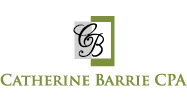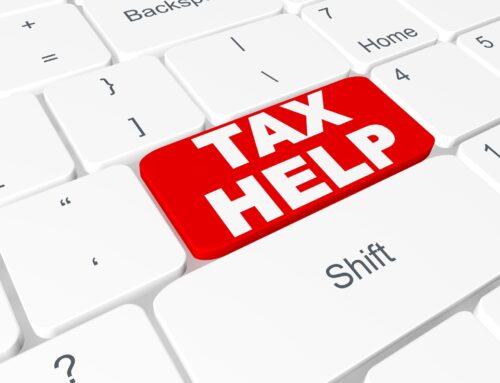Payroll taxes are set to surge next year as the pandemic economy’s dynamics amplify the costs for companies and their employees for the Canada Pension Plan and Employment Insurance.
Both contribution rates and maximum contributions will rise sharply for the CPP in 2022, according to recently released information. For EI, rates are frozen for the second year, but maximum contributions will jump.
The dual increases mean that employers face accelerating growth in the combined EI and CPP maximum contributions, which will hit $4,833.64 – an increase of 18 per cent in just two years.
Those soaring costs are an expensive intersection of political decisions to boost pension benefits in coming decades, the statistical quirk of rising average wages during the pandemic, and a funding model that dumps the costs of recessions onto employees and employers.
And it comes at a most inopportune time, as businesses are struggling to get back on their feet. Ottawa has seemingly acknowledged that vulnerability by extending its hiring subsidy program. But the increases in EI and CPP pull in the opposite direction, driving up payroll costs.
The government has blunted the rise in EI costs by freezing rates for two years. But that move has created a $33.9-billion deficit in the program. Without Ottawa stepping in to pay at least part of that cost overhang, EI contribution rates will need to rise by their legally allowed limit for years.
Year-end tax strategies for seniors to avoid bigger tax bills
“We’re going to see payroll tax hikes as far as the eye can see,” said Dan Kelly, president and chief executive officer of the Canadian Federation of Independent Business.
The CFIB, along with the Canadian Chamber of Commerce, are pushing for Ottawa to lead an effort to rein in the increase in payroll costs. But there has been no indication of any appetite to do so, and for CPP, any changes would have to be negotiated with the provinces.
If anything, the Liberals seem to be signalling that they intend to increase benefits under the EI program, a move that would add to costs and increase the pressure on contribution rates, said Leah Nord, senior policy director at the chamber. That prospect underscores the need for a comprehensive review of the EI system, including whether it should be continued to be funded solely by employee and employer contributions.
Jessica Eritou, spokesperson for Finance Minister Chrystia Freeland, said in a statement that the government will review EI contribution rates as part of its comprehensive examination of the employment insurance system.
CPP contributions are being propelled by two factors, one planned and one a statistical surprise. There has been a long planned increase in the CPP contribution rate, which kicks in after the first $3,500 of earnings.
The CPP rate did not increase from 2003 until 2018. But a planned five-year increase began in 2019, and continued as scheduled during the pandemic, as this second chart shows. That increase is designed to fund enhanced benefits for Canadian workers – a bigger financial cushion in retirement, but more costly in the meantime.
That has pushed the rate that employees and employers each pay to 5.7 per cent of eligible earnings in 2022, up from 4.95 per cent in 2018, as this second chart shows. The combined contribution rate for employees and employers (and the rate that self-employed workers pay) will hit 11.4 per cent of eligible earnings next year.
By itself, that would have increased the payroll tax burden. But then the pandemic arrived and wreaked havoc in the jobs market, with losses concentrated among lower-paid workers. That created a statistical quirk of an increase in the average industrial wage, since there were fewer lower-paid workers being counted in the calculation of that average.
Under CPP rules, that average is used to calculate the income ceiling for contributions. As the average wage has risen sharply during the pandemic, so too has the income ceiling. For 2022, the cut-off point for CPP contributions is $64,900, up from $58,700 in 2020. That $6,200 increase in just two years equals six years’ worth of increases between 2014 and 2019.
The increase in the contribution ceiling doesn’t affect lower-paid workers. Only someone earning more than $58,700 next year would end up facing higher deductions for CPP (although all employees are touched by the increase in rates).
With EI rates frozen in 2021 and 2022, lower-paid workers (and their employers) have been spared increased costs. But higher-paid workers do face higher total contributions as the EI ceiling for maximum insurable earnings has risen to $60,300 in 2022, up from $56,300 in 2021.
That means someone earning at least $60,300 next year will pay a total of $952.74 in EI contributions, up from $856.36 in 2020. Their employer would pay a total of $1,333.84 in 2022, up from $1,198.90 in 2020.
More concerning, however, is the deficit that has built up in the EI program. The annual actuarial report from the Office of the Superintendent of Financial Institutions forecast an accumulated deficit of $33.9-billion by the end of next year. Under EI legislation, the government is supposed to set contribution rates that will balance that account over seven years.
The actuarial report, issued in September, said rates would need to average 1.81 per cent of insurable earnings over the next seven years to wipe out that accumulated shortfall. But that likely understates how high EI contribution rates will eventually rise, since annual rate increases are limited to 0.05 percentage points. (However, OSFI said in a statement that the government can choose to change that ceiling under EI’s governing legislation, on the joint recommendation of the ministers of finance, and employee and social development.)
The annual limit means rates would rise more slowly than the actuarial report projects, allowing deficits to grow larger and requiring employee and employer contributions to rise more, for a longer period of time, than forecast by the actuary. And that scenario does not include the additional costs of any new benefits that Ottawa attaches to the EI program.
For University of British Columbia economist Kevin Milligan, the burgeoning EI deficit illustrates a fundamental flaw in the design of the program.
“It looks like the funding model is broken again,” said Prof. Milligan, who was seconded to the Privy Council Office in fiscal 2020-21.
Any recession increases unemployment, driving up the cost of the EI program and reducing its revenue. Then, the seven-year rule kicks in, resulting in increases to rates just as the economy is starting to recover.
Prof. Milligan said one option is for the federal government to resume making direct contributions to the EI fund, which it once did. If Ottawa were to take that step, it could cost billions of dollars. But Prof. Milligan said the federal government could limit its intervention to cover the recession-related effects, leaving employees and employers to fund continuing costs.






